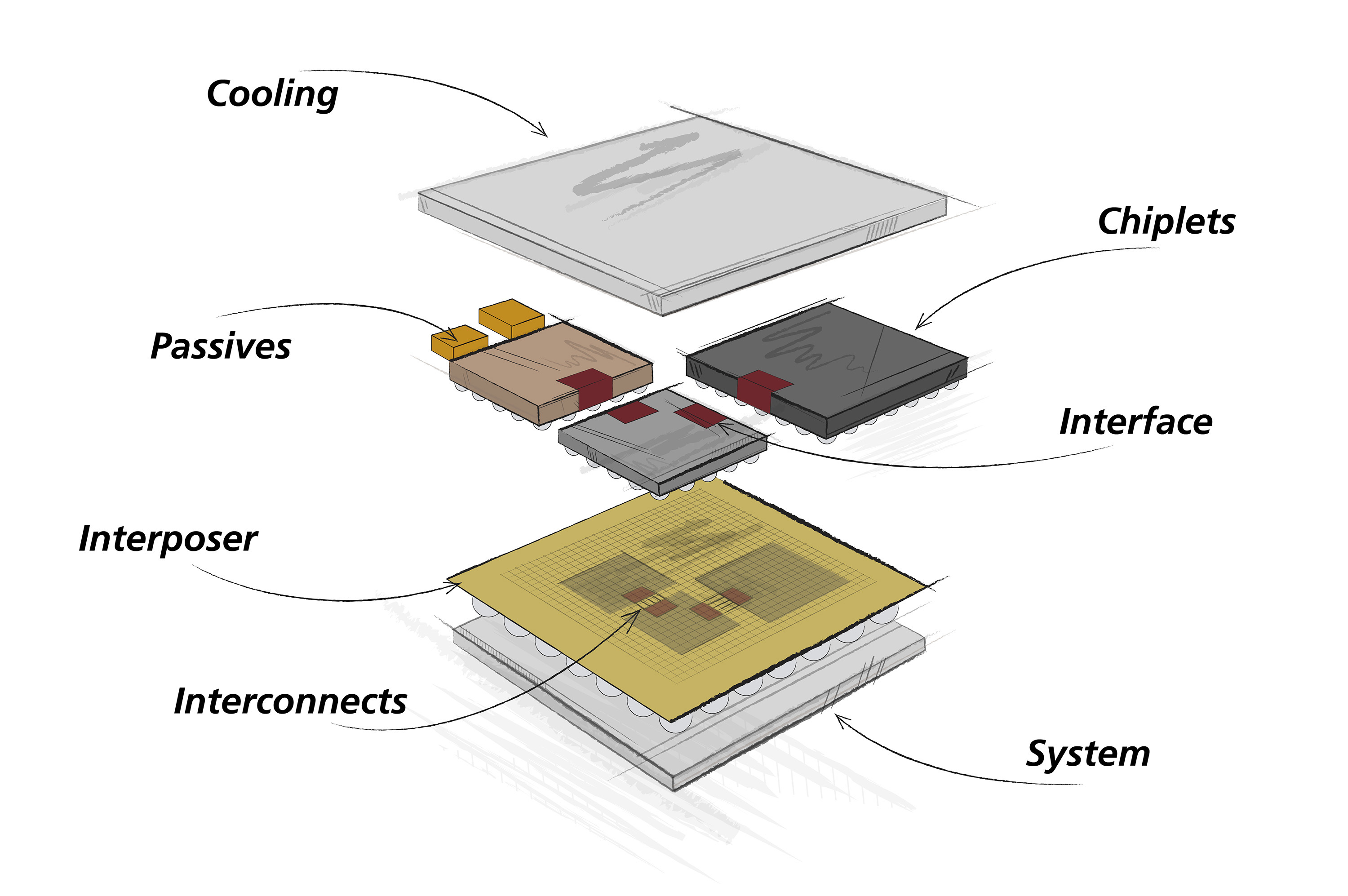The drawing shows an example of the 3D structure, the contacts (interconnects) and the interfaces (interfaces) between the planks and the different ply planes. Graphic: Fraunhofer IIS/EAS
Saxony and California are planning to build an automotive radar and 5G radio demonstrator
Dresden / Santa ClaraMay 3, 2023. In order for European companies to be able to build high-performance circuits for cars, portable radio systems or instrumentation without expensive chip factories worth billions, Fraunhofer Dresden and the California semiconductor company would like to “achronix“from Santa Clara will work closely together in the future using what is called ‘chiplite’ technology. He has announced the branch of the Fraunhofer Institute for “Development of Adaptive Systems” (EAS) in Dresden. As an example of a solution, they want to combine several circuits in a very small space that can convert and preprocess analog signals into digital signals at a special speed. Possible application areas for these composite chips are, for example, radar eyes for driver assistance systems in modern cars or 5G mobile radio systems.

The world’s largest contract operator TSMC in Taiwan is already working with chiplets – here is a processor for supercomputers. Image: TSMC
Merge several circles into one
Background: Even such chip giants as Nvidia, Apple, TSMC and Intel are now not necessarily inclined to produce particularly powerful circuits “in one piece”, but are increasingly grouping chips of different technology generations into so-called chiplets. They are then not connected to each other via the circuit board’s relatively slow connectors, but directly via chip planes, so that they function in many respects like a circuit. This could be, for example, computational units, memories, analog converters, radio units, and other circuits stacked on top of or next to each other and connected directly into chip factories. By the way, cooperation partners EAS and Achronix are particularly relying on the “Bunch of Wires” (BoW) approach and “Universal Chiplet Interconnect Express” (UCIe) as communication technologies.
opportunity for Europeans
The technology is also interesting to European companies, since they don’t have direct access to the latest generation of chip factories with structural widths less than ten nanometers — and they often only need it for some critical computing functions anyway. To this extent, if they can build their circuits like Lego bricks into wooden boards by factories in Europe and Asia, perhaps using interchangeable chip factories, this could solve many of Europe’s high-tech supply chain problems.

Andy Heinig is responsible for Active Electronics and System Integration at Fraunhofer EAS Dresden. Photo: Hikprot
Value chains for this still have many gaps
However, Shiplet’s technology is also demanding. This is why actors such as EAS Architects are currently working with partners to take control of them and build agreed regional and global value chains for this. For this purpose, Fraunhofer is cooperating with Achronix in California and with Samsung in South Korea, for example. On the other hand, EAS chip expert Andy Heinig also calls for capacity building for 3D integration, chip testing and final assembly in Saxony.
Author: Heckbrot
Sources: Fraunhofer EAS, Achronix, Oiger Archives
Similar jobs

“Certified tv guru. Reader. Professional writer. Avid introvert. Extreme pop culture buff.”







More Stories
Samsung Quantum Dot TV: Art meets technology
Pitch: €56m for energy startup Reverion
Plastoplan: Plastics for Energy Transition